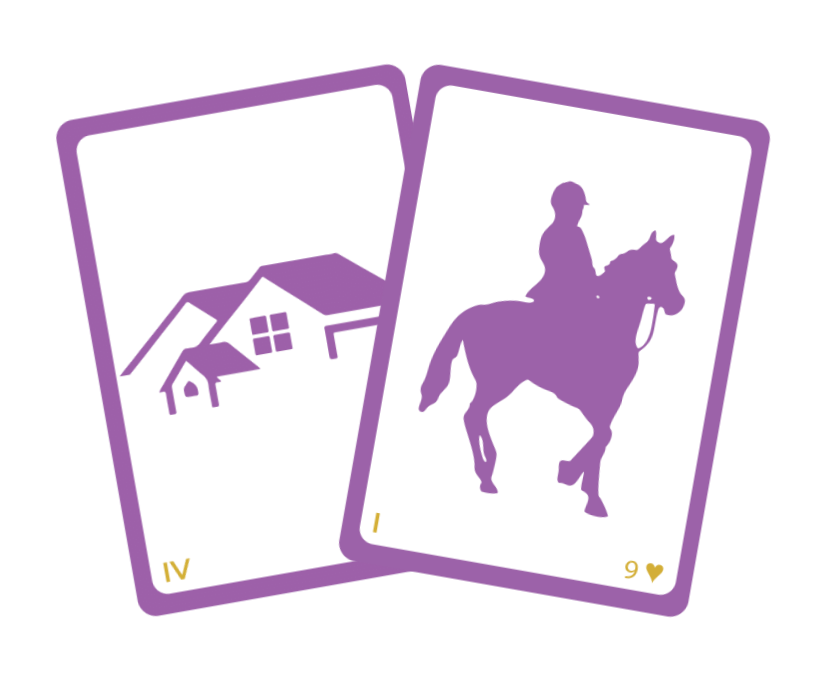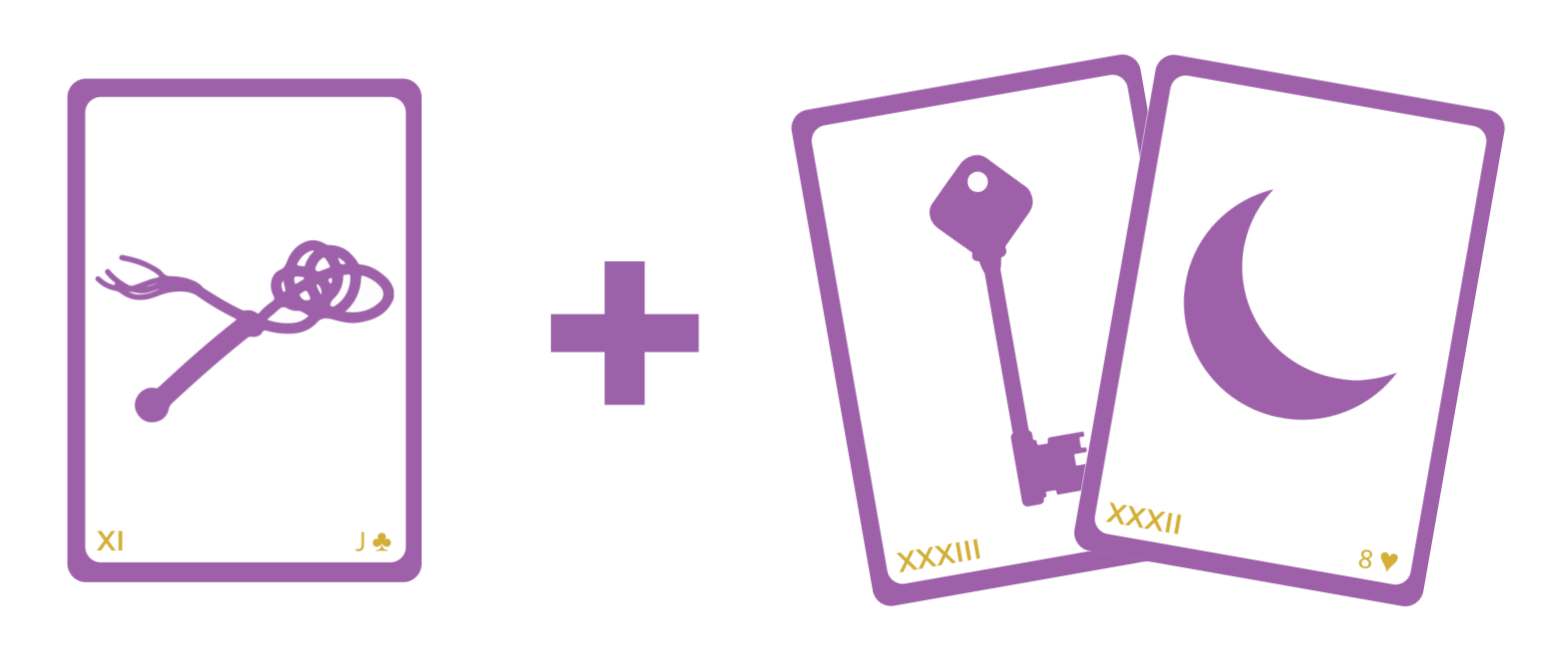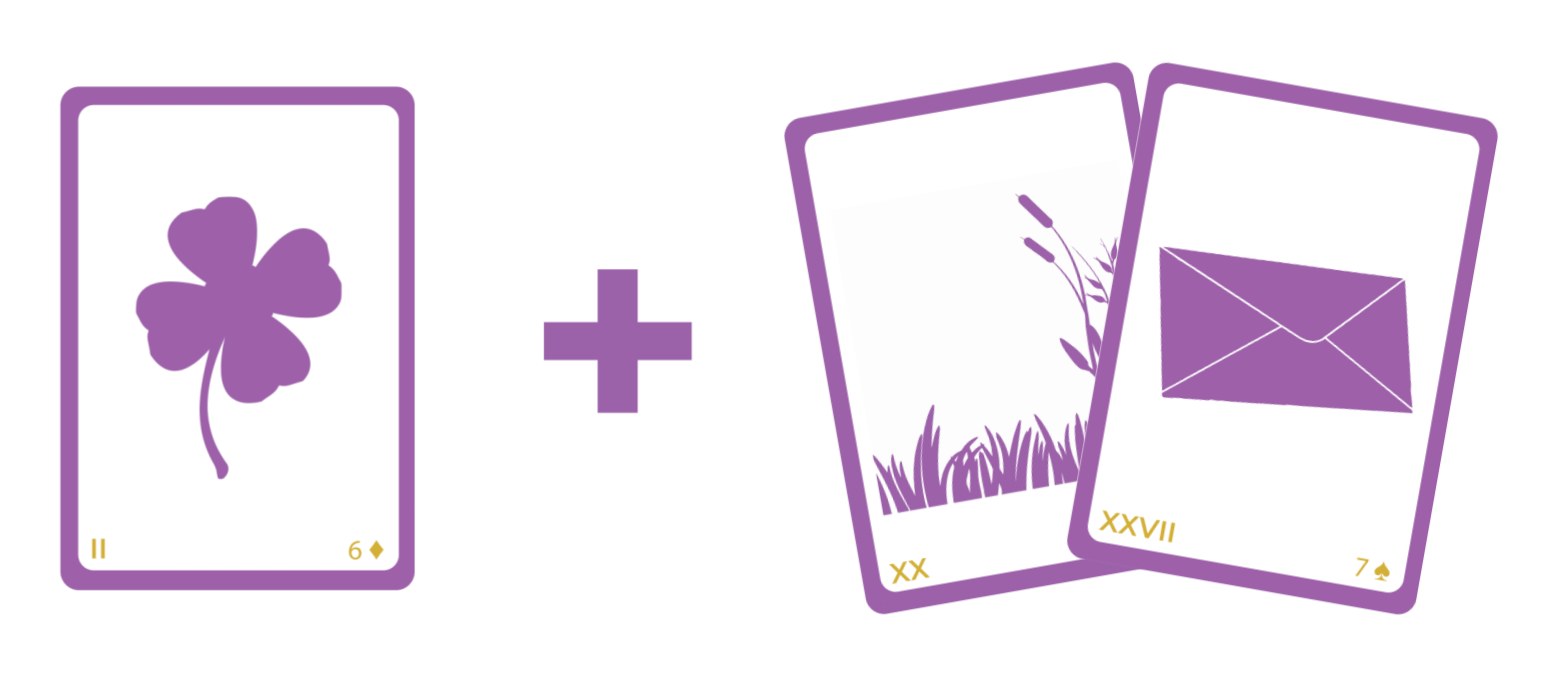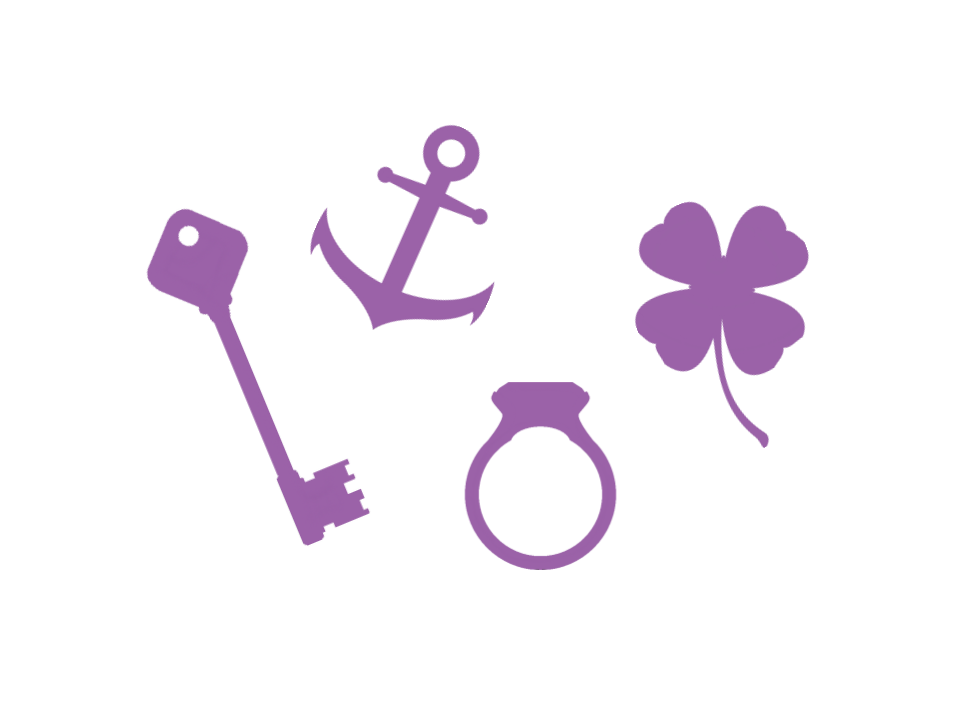READING LENORMAND ON THE GO
Hi everyone, welcome back to the channel. Thank you as always for tuning in. If you are new here, welcome! I am Layla, the Lenormand Reader, and I am one of the few people who focuses almost exclusively on the Lenormand practice.
So be sure to have a look at all of the links that I have for you, discover the website, and all of the good stuff that I have there to help you master this amazing deck.
Welcome to a new tutorial. In this tutorial, I want to tell you about how I do Lenormand readings on the go.
If I don't have a big table, or even a small table where I can do layouts like lines, portraits, mini Tableaus, or much less Grand Tableaus, I have a few methods that I like to use to answer questions with a deck when I don't have the luxury of space.
So I am going to share with you three methods, two short ones and a longer one. Let's get right into it.
SHORT ON-THE-GO METHOD 1
Let me tell you about my first method. My first method is simply to draw a pair of cards.
Obviously, I cannot shuffle in a messy pile, where you put all the cards on the table and you shuffle them around like this.
Messy pile is my favorite way to shuffle, but if I don't have the luxury of space, I would do a hand-over-hand shuffle a few times to make sure that my deck does not carry a bias from a previous reading.
So I shuffle the deck hand over hand and then I draw a pair of cards. I do this by cutting the deck and taking the bottom card of the cut pile and the bottom card of the deck. I read these two cards as a pair. Very straightforward.
Of course, you can also take them off the top. That's fine. My habit is connected with the shuffling. I shuffle hand over hand, cut, and read the pair.
So let's go ahead and try a question. Let's ask if X is going to get in touch, and let's draw a pair and see what the answer is. So we shuffle and then cut.

Now, that is a very good answer. It is very clear. The Rider is a messenger card, and the House can represent any space or place. It looks like there is news, and the Rider can mean that it is being delivered to the House.
Clearly, these cards mean that I am going to hear from this person. I often take the Rider and House to mean a visitor, so contact or communication with this person can also involve a meeting.
This is a straightforward and positive answer to my question.
So that is for the first method.
SHORT ON-THE-GO METHOD 2
What about the second method? The second method I use is to draw a triplet, and it is also very straightforward.
Again, I do a quick hand-over-hand shuffle, and the way I draw the triplet is to turn over the top card, and then I take the bottom two just beneath it.
This is how I do it. I don't know how I developed this habit, but I think it is kind of fun.
I look primarily at the first card, and then I get additional detail from the bottom two beneath it.
So let's try this method with the same question: Is X going to get in touch? Shuffling, hand over hand, and let's draw my triplet in this funny way. I turn over the first card, and then the bottom two beneath it.

Now, this is an interesting reading because the top card is challenging, but the bottom two cards are actually very supportive. So I would say that I could hear from this person thanks to the Key and Moon, but it sounds like there is a bit of an obstacle at first because of the Whip. Perhaps it represents a delay, but eventually there is going to be contact.
So, this is the very simple way I would do a portable reading. I do the reading in my hands, either a pair or a triplet.
Obviously, you can draw one, two, or three cards off the top of the deck. You could draw your pair or triplet off the top or bottom of the cut pile. You will develop your own personal habits with how you handle the deck. You might cut and take the cards off the top or bottom of the cut piles, or any other way.
It really doesn't matter. What matters is that the deck is shuffled so that the principle of randomness is respected.
Now, before I move on to the longer spread that I do when I am on the go, I want to tell you that what is fun about the pair and triplet is that you can build a story.
You can answer a series of questions by picking a triplet or a pair, and each time answering a part of the question.
So, for example, if the question was, like we said, will X get in touch, and I draw this pair, the Clouds and Sun. It sounds like a yes, answering the question very directly. I will hear from X, and that is all there is to it.
We have the Clouds and the Sun shining over the Clouds, telling us that yes, X will get in touch.
So what next? Well, we can build on the question, and we can ask, will X relay the good news? What will be their answer?
So we do another hand-over-hand shuffle, shuffling the cards, and then draw another pair. Here we get the Fish and Star. This is also a very positive pair, answering my wish, and quite interestingly, it has to do with finances, as I said. So clearly the way forward, once X contacts me, is going to be aligned with what I want.
As you can see, we can layer the questions and answers as we go, building on the previous question and the cards that were drawn.
This is fun to do with shorter spreads, and indeed it is better to do them with shorter spreads because you can answer each part of the question in a very specific way.
And obviously, you can use either the pair or triplet short reading to answer a series of questions.
Our first question was if X was going to get in touch. I turned over the first card and then the bottom two for a triplet short reading. This sounds like a yes, as the House, Fish, and Heart are all very positive cards. The House represents getting together with someone, the Fish and Heart are great for happiness, wish-fulfillment, and abundance. So we can take these cards as a straightforward yes.
Then, we move on to the next part of the question. We want to ask what news will X relay to me, now that we know they will get in touch?
So we shuffle again, hand over hand, and turn over the top card and the bottom two. We get the Clover, then the Garden and Letter.

Obviously, the Clover is a very lucky card and one of the best cards. So, things are going to go exactly as I want. The Letter with the Garden can point to documents, paperwork, and similar things, which are actually quite relevant to the question I have in mind.
So you see how we can build the different parts of a question. We can dig deeper into something by doing a series of quick and small readings. I find that this works really well with these on-the-go readings.
Let me know how you like this approach. Let me know if you do readings on the go in other ways.
LONG ON-THE-GO METHOD
The third method I want to share with you is the longer method. This is where I want a storyline as opposed to a quick answer like a pair or a triplet.
Obviously, if I don't have the luxury of space, I can't get many stories from my Tableau layouts. So here's what I do. I shuffle the cards as thoroughly as I can to avoid any bias from previous readings, and then I cut.
I tend to cut a few times, but I don't have any superstitions about these methods. What matters is the principle of randomness. Do whatever you like as long as your deck is well shuffled.
I like to cut a few times as part of shuffling, and then here's what I do: I turn over the deck and I read a story.
I read card after card, after card, and I read a long sentence through the cards. I don't always go up to card 36. Instead, I feel it out. I try to get a sense of when the answer lands on me or how I feel the story wraps up, and I stop there.
So I go with how I feel each time. I play it by ear. I don't have a set number of cards that I look at to read the line. It's rare that I read a full 36-card line.
This is my longer version for reading when I'm on the go.
Let's go ahead and see if we can answer the same question with a longer line. Let's see if person X is going to call me and then what is going to happen? What is going to be the outcome of our communication?
I shuffle the deck first, and then I cut a few times, or once, or whatever I feel like doing at the moment. Then I turn over the deck and I read the line starting with the House.
So the House, Heart, and Fox. Okay, so the first four cards are looking positive. The Fox is a bit tricky, but it can be just a reference to this person. It can also be someone like an agent, a bank teller, an accountant, etc. - people we get help from. In fact, this person is a good representation of the person I have in mind.
The Heart and Flowers are a good pair. The Anchor is a positive conclusion, and I'm very happy to see the Child, because I'm looking at starting something with the help of this person, and it looks like it will happen, especially with the Anchor and Flowers.
The Book can mean that there are some unknown factors. I can imagine what the Whip and Stork are about. They involve some work. I'll probably have to run around a little and get some paperwork done. And remember in the triplet earlier, we saw the Letter, and I was telling you that it involves paperwork.
So again, with the Book, there can be some information that is needed, or there can be some misinformation that needs to be rectified. And the Stork is going to keep me busy a little bit with this, especially with the Whip.
But then the Sun is a lovely outcome. So the good news, again, answering positively.
And look, we have the three cards that we drew earlier. You see, this is bias from our previous reading. So the deck would have to be shuffled better. I'm going to show you what I do for this in just a bit. But let's assume that the principle of randomness was respected. We can continue with our story, and it looks like there is good news and a positive conclusion.
And so it sounds like the Book and Whip bring a few hurdles, but it sounds like these are resolved since we see a positive conclusion.
It's really nice to see the Fish on the other side of the Clover, because like I said, it's connected to a financial element. And the Ring and Moon are the acceptance that I'm after, and I'm happy to see the Key as well.
So, I can stop here if I like, because the answer to my question is pretty clear. It unraveled in a way that landed and made sense to me.
This is what I mean by doing a line, starting with a good shuffling, cutting a few times if you like, and then reading a story starting from the bottom card.
Now, you might like to start from the top. So then you shuffle your deck and you might turn over each card in turn.
I find that it is easier to handle the deck from the bottom, because when you do the top, you have to put the deck somewhere, and then you have to make sure you keep the order of the cards, and every time you have to handle your deck so you can turn over the next card. It becomes a little bit inconvenient, so I prefer to just read from the bottom.
And it doesn't matter as long as it is properly shuffled and the principle of randomness is respected.
I don't believe that cutting, knocking, and things like that make any difference to the reading. I think these are more on the superstitious side of the practice. I think the key is really the principle of randomness when it comes to divination - and your good intentions.
ON-THE-GO SHUFFLING TECHNIQUE TO AVOID BIAS
Before we wrap up, I wanted to tell you about how to avoid bias in the cards. We had picked up the Letter, Garden, and Clover, and I told you that it looks like we have bias from a previous reading.
So, what can you do to avoid this if you don't have space to shuffle a messy pile shuffle?
Here's what I do:
Suppose you drew these two cards as a pair. Take them out and slide them back into the deck at a random spot, then shuffle all the cards again, either by hand-over-hand shuffling or any other method. This way, you are more likely to release the energy of that reading and have a properly shuffled deck again.
And if you drew a triplet, you just do the same thing: slip each card back into the deck at a random location, and then shuffle the whole deck again.
This can be a bit trickier to do after you've read a long line, because you have many more cards to slip back into the deck. A messy pile would be ideal.
But you can do it, and you can shuffle hand-over-hand every so often until you have all the cards back in the deck.
You could also carry a few decks with you when you travel, decks that are already well-shuffled. And many people like to use several decks anyway, because they use them for different purposes, usually inspired by their imagery. This way, when you are done using one deck, you can move to the other.
So, I hope you enjoyed these ideas. Let me know your thoughts about my approaches to doing readings on the go. I would really love to know what you do when you are on the go and you don't have a big table. How do you do your Lenormand readings?
Leave me a comment. I look forward to reading them, and as always, thank you for watching. Until next time, take very good care of yourself.

Take Your Lenormand Practice to the Next Level
Lenormand Reader’s Guides will help you master Lenormand’s card meanings and layouts from simple to complex. Kick-start your Lenormand journey today - and take advantage of the Three-Book Bundle discount!
Learn more about Lenormand Reader’s Master Guides
